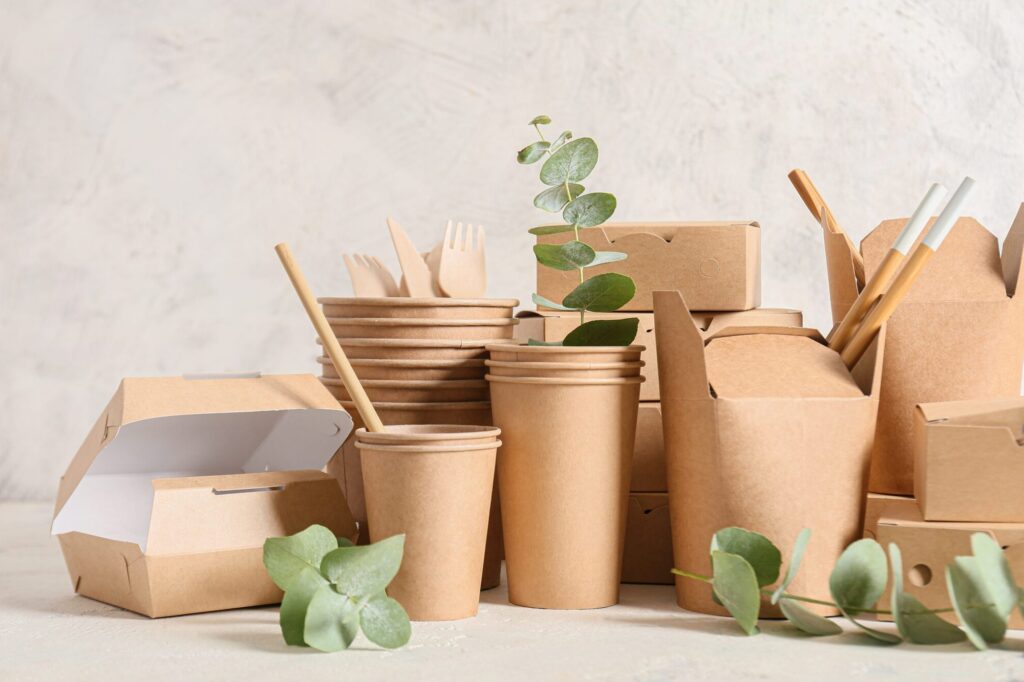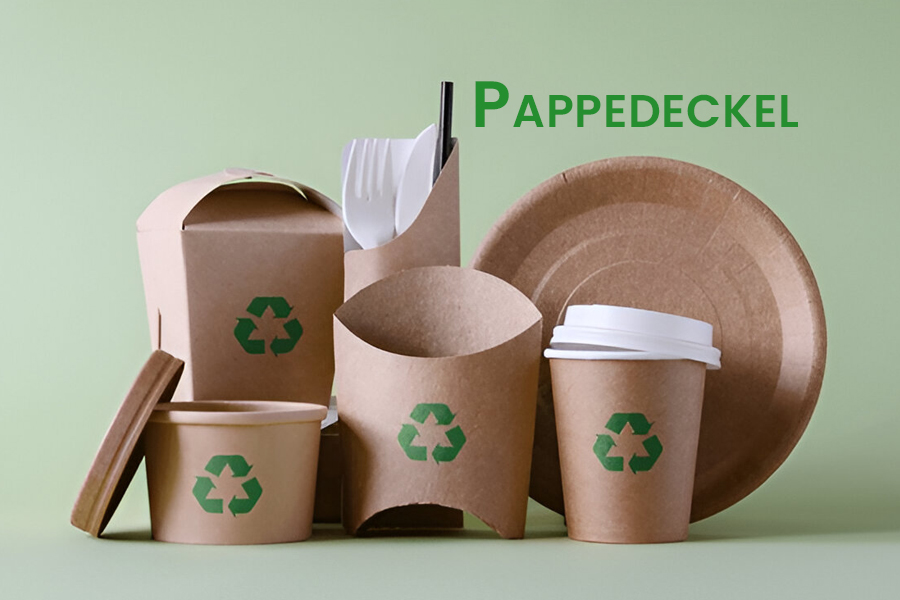The German word pappedeckel translates directly into “cardboard lid” or “paperboard cover.” While it may sound ordinary, the concept behind pappedeckel carries surprising weight in how societies package, protect, and consume goods. It is a word born out of daily practicality but shaped by culture, industry, and sustainability. At its core, pappedeckel refers to simple cardboard discs or lids often used to cover drinks, protect food, or serve as a layer between products. Yet beyond the literal, the pappedeckel reflects the story of how materials as unassuming as cardboard can shape habits, reduce waste, and connect industrial design with environmental responsibility.
Origins of Pappedeckel
Pappedeckel is a word firmly rooted in the German language. “Pappe” refers to stiff cardboard or paperboard, while “Deckel” means lid or cover. The two words joined together form a practical compound term, reflecting the German linguistic tradition of fusing descriptive elements into precise, utilitarian nouns.Historically, cardboard production gained popularity in the 19th century as industries looked for lighter, cheaper alternatives to wood and metal packaging. By the early 20th century, cardboard lids pappedeckel were widely used in food and drink services, particularly as coasters in cafés and beer gardens across Germany. These humble discs served both functional and cultural roles, keeping tables clean and drinks steady while also displaying advertisements or artwork.
At its simplest, pappedeckel is about function. It is a lid, a cover, or a barrier crafted from cardboard. Its strength lies not in technological sophistication but in straightforward usefulness. A coffee-to-go cup often carries a pappedeckel lid, pressed into shape to prevent spills. A glass of beer might rest on a pappedeckel coaster, which absorbs moisture and protects the wooden surface beneath. Food items may be stacked with pappedeckel layers between them to stop sticking or crushing. In each case, the pappedeckel performs quiet, often unnoticed work. It safeguards, separates, and stabilizes. This ordinary quality is what makes the concept remarkable. Societies rely on millions of such small, inexpensive items every day, yet rarely consider their cultural or environmental weight.
Why Pappedeckel Matters Today
In an age defined by sustainability, the pappedeckel carries renewed importance. Plastic packaging is under scrutiny worldwide, and alternatives are in demand. Cardboard, biodegradable and recyclable, provides an accessible answer. The pappedeckel, once overlooked, now represents an eco-conscious approach to daily consumption.From cafés that use recyclable cup lids to companies experimenting with compostable drink coasters, pappedeckel embodies the shift toward responsible material choices. What was once a convenience has become a symbol of conscious consumption, aligning practicality with planetary stewardship.
Pappedeckel in Everyday Life
The pappedeckel’s presence is everywhere once one knows to look. It sits under a steaming cup in a Berlin café, embossed with a brewery logo in a Munich beer hall, or stacked in piles at a food festival. It tops takeaway containers, divides layers of pastries in a bakery box, or cushions fragile items in transit. Though often discarded after a single use, pappedeckel is rarely wasted in Germany, where recycling systems are strong. The Blue Bin culture ensures that paper-based products like pappedeckel re-enter the cycle, reborn as new lids, boxes, or boards.
Scientific and Material Basis of Pappedecke
Cardboard, the base material of pappedeckel, is typically made by compressing multiple layers of paper fibers. These fibers are often recycled, giving cardboard a sustainable edge compared to virgin materials. The layered design creates rigidity while remaining lightweight, making it ideal for lids and separators. Pappedeckel is not waterproof in its natural form, but manufacturers sometimes apply coatings or laminations to improve resistance against moisture. The balance between protection and recyclability is a constant design question, as coatings can limit compostability. Thus, modern innovations increasingly focus on biodegradable coatings that preserve both function and eco-friendliness.
Advantages of Pappedeckel
The appeal of pappedeckel lies in its blend of practicality and sustainability. It is inexpensive to produce, making it ideal for mass consumption. Its cultural resonance in Germany, where environmental responsibility is deeply embedded, adds another layer of significance. Pappedeckel is not just packaging it is a statement of values.
Challenges of Pappedeckel
Despite its strengths, pappedeckel faces challenges. Its durability is limited, especially against liquids. A cardboard lid exposed to prolonged moisture softens and loses strength. Its single-use nature, while less damaging than plastic, still creates waste if recycling is not properly managed. Transportation also adds costs, as cardboard, though light, takes up space. Moreover, in global markets where recycling systems are weaker, the advantages of pappedeckel diminish. Its eco-friendly potential depends on infrastructure as much as design.

Pappedeckel in Food and Beverage Culture
Germany’s beer gardens highlight pappedeckel’s cultural charm. Beer mats made of cardboard, widely known as bierdeckel, fall within the broader category of pappedeckel. They absorb condensation, prevent rings on tables, and often feature advertisements for breweries. For collectors, these coasters are miniature works of art.In coffee culture, the cardboard lid is equally important. While plastic lids once dominated, a shift to cardboard options signals a change in values. Consumers now seek biodegradable solutions that align with their lifestyle choices.
Case Studies of Pappedeckel in Practic
In Hamburg, a café chain replaced all plastic cup lids with recyclable cardboard pappedeckel, reducing its plastic use by 80 percent in one year.In Munich, breweries distribute pappedeckel coasters printed with sustainability messages, turning a disposable object into a platform for environmental awareness. These examples underscore how simple objects can influence broader systems of consumption and culture.
Comparing Pappedeckel with Plastic Alternatives
| Feature | Pappedeckel (Cardboard Lid) | Plastic Lid/Separator |
|---|---|---|
| Material | Cardboard/paperboard, often recycled | Petroleum-based plastic |
| Eco-Friendliness | Recyclable, biodegradable | Difficult to recycle, non-biodegradable |
| Cost | Low, varies with recycling rates | Low in production, high in environmental cost |
| Durability | Limited, weak against prolonged moisture | Strong, long-lasting but wasteful |
| Cultural Value | Tied to sustainability and practicality | Increasingly criticized as wasteful |
Global Spread of Pappedeckel
While the term is German, the practice is international. In Europe, cardboard lids and coasters are common in cafés and bars. In Asia, pappedeckel-style lids are replacing plastic in major cities concerned with waste reduction. The global spread reflects not just practical utility but a shared desire to reduce plastic dependency. Pappedeckel has become part of a worldwide cultural shift toward responsibility in design and consumption.
Pappedeckel in the Future
The future of pappedeckel is tied to innovation in sustainable materials. Scientists are experimenting with coatings made from natural waxes, starches, and even algae to improve water resistance without compromising biodegradability. Smart printing technologies may turn coasters and lids into carriers of information, linking consumers digitally to brands or recycling instructions. As more societies confront plastic waste, pappedeckel will likely emerge as both symbol and solution a modest material making an outsized difference.
Expanded Pros and Cons
| Pros | Cons |
|---|---|
| Affordable, accessible, widely available | Limited durability, weak against liquids |
| Recyclable and eco-friendly | Wasteful if recycling systems are absent |
| Lightweight and versatile | Short lifespan compared to reusable materials |
| Cultural value in beer, coffee, and packaging traditions | May require coatings that complicate composting |
| Reduces reliance on single-use plastics | Takes space during shipping, raising logistics costs |
Beyond Packaging: Pappedeckel as a Cultural Symbol
At heart, pappedeckel is more than packaging. It is a cultural marker of how societies interact with materials. In Germany, where recycling bins are a ritual and beer coasters are collectibles, pappedeckel represents balance between everyday convenience and ecological consciousness. Globally, it points to the possibility of change: replacing harmful habits with humble yet effective alternatives.
Final Words
The story of pappedeckel reminds us that even the simplest objects can shape culture, industry, and sustainability. A cardboard lid may appear trivial, yet it reflects values, solves problems, and carries symbolic meaning in a world looking for greener choices. Its future lies not only in recycling bins but in the mindset it represents: that small, thoughtful design decisions can lead to larger collective change. Pappedeckel is more than cardboard. It is proof that the modest can be mighty.
FAQs on Pappedeckel
1. What does “pappedeckel” mean in English?
Pappedeckel literally translates from German as “cardboard lid” or “paperboard cover,” usually referring to small, pressed cardboard items.
2. Where is pappedeckel most commonly used?
It is widely used in cafés, beer gardens, bakeries, and food packaging to cover, protect, or separate items.
3. Is pappedeckel environmentally friendly?
Yes. Made from cardboard or recycled paperboard, it is recyclable, biodegradable, and considered more eco-friendly than plastic alternatives.
4. What are the disadvantages of pappedeckel?
Its main drawbacks are low durability, weakness against liquids, and limited lifespan compared to sturdier reusable materials.
5. Why is pappedeckel culturally significant in Germany?
In Germany, pappedeckel appears in beer culture as collectible coasters and reflects strong traditions of recycling and sustainability.

